Jind/Rohtak/Mewat: Mehbooba, 80, doesn’t know if anyone from back home is alive. It’s been 60 years since a middleman brought her more than 1,400 kilometres away from her home in the outskirts of Mumbai to the most backward district in the entire country — Mewat in Haryana.
She was married off to a man in the village of Gohana and never had the time or resources to make the long journey back home ever again. She was just 20 at the time.
“Ab toh main ghar ka raasta hi bhool chuki hoon” (Now I’ve forgotten how to even go back home), she says, sitting with her hands folded in her lap, her two remaining teeth sticking out from her gums.
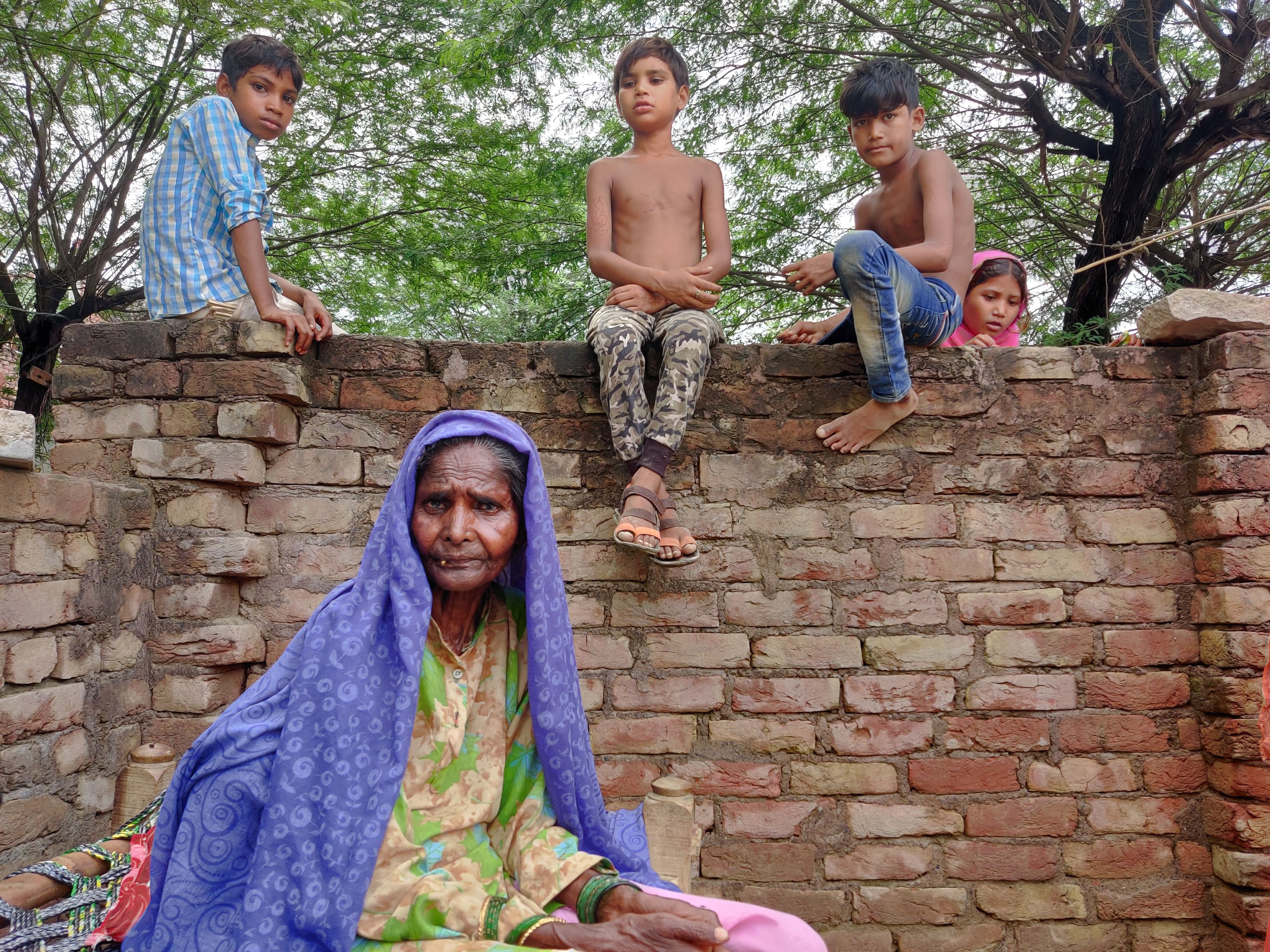
“At that time, there were no phones, internet or even radio, so there really was no way to contact anyone. I assume my parents would have died by now, and I don’t know who is left to go back to,” she says.
Her husband died 30 years ago. Even the middleman who brought her to Mewat is dead. Working her way through the initial disorientation of forced displacement, Mehbooba recalls, she managed to build a life for herself, helping to farm the family’s land.
“I missed home a lot in the beginning. I used to love wearing saris — so many different colours. Here, I just never got the chance to wear one again,” she says wistfully, looking down at her beige and green kurta.
Mehbooba is one of the many ‘mol ki bahus‘ that a Haryana minister recently joked about, causing widespread anger.
ThePrint travelled across Haryana, meeting brides, khap panchayat members, politicians and NGO workers to uncover the truth about the bride-buying problem.
Also read: These stats on gender inequality will surprise you
‘Lesser brides for unworthy men’
“This is a very old phenomenon, dating back at least 50 years,” Jagmati Sangwan, the Rohtak-based state president of the All India Democratic Women’s Association (AIDWA), tells ThePrint.
“When the sex ratio dipped even further in Haryana some 30 years ago, many such brides were brought in, and we’re seeing the consequences today. The reality is this is going to continue for another 20 years so that the state’s bachelors can find wives. Instead of making jokes, the government should expend their energy in creating community centres or conducting awareness campaigns at the lowest level,” she adds.
“In every village, there are at least 100-150 men who don’t fit into the ‘marriage market’ — they are unemployed, too old, have low paying jobs, less land, aren’t suitably good-looking, have been married before or have a physical disability. They need to bring in women from other regions,” she explains.
“These women are called ‘paros’ or ‘mol ki,’ sometimes even ‘Biharin,’ and are considered to be ‘lesser’ women, for these ‘lesser men’. Even their children are considered ‘lesser,’ and face discrimination in schools and their localities as they get older,” she adds.
Such marriages are borne from necessity on both sides — men need a wife in the house to further their male lineage, manage domestic chores and bear the brunt of agricultural labour, while the women belong to extremely poor households back in their native states, so the absence of any dowry expectation makes these weddings easier on their families.
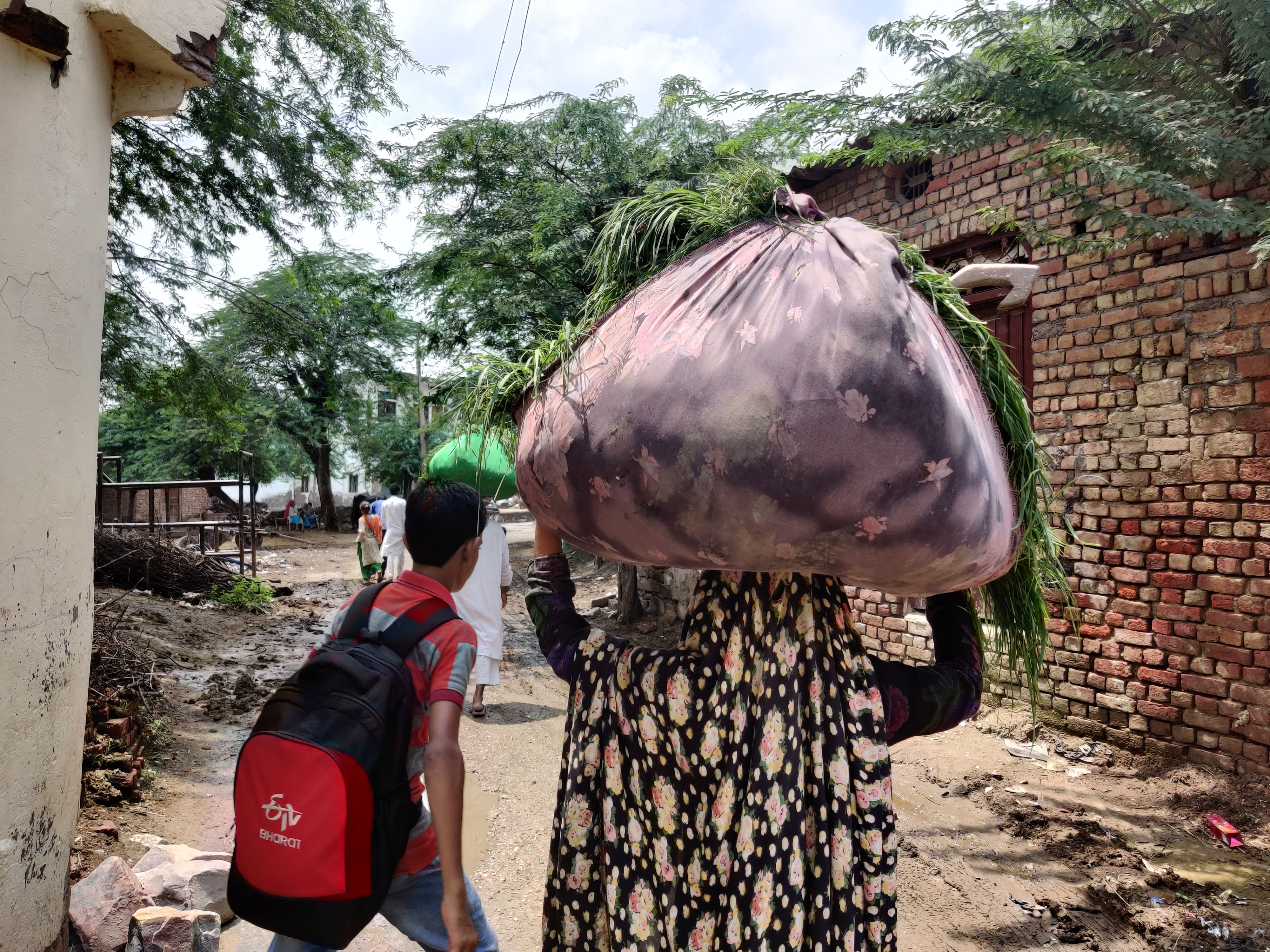
Haryana, the land of Jats, josh and jameen, has been riddled with a shortage of women for decades now. Deeply entrenched patriarchal traditions ensured that families favoured the birth of the male child, leading to female foeticide and infanticide. Improvements in reproductive technology in the form of ultrasounds and prenatal healthcare inadvertently fuelled the problem, aiding sex-selective abortions.
According to the 2011 census, the sex ratio in Haryana was 879 women for every 1,000 men, which was far below the national average of 940. This meant that generations of boys grew up in largely male households, finding no women in their villages to marry.
In this vacuum of courtship, the exploitatively enterprising reality found an opportunity. Young women were brought in through middlemen from poverty-ridden villages in Assam, West Bengal, Jharkhand, Bihar, Himachal Pradesh, Odisha, even Kerala and Nepal, as brides for Haryana’s bachelors, occasionally through organised human trafficking routes.
The price of a bride ranged anywhere between Rs 40,000 and a lakh.
Domestic violence, abuse and no way out
A smell of garbage permeates the air in Mewat’s Gohana village — the alleyways are flanked by open drains, discarded bath water and animal excreta, and to walk through these means to wade through mounds of sludge.
The vision of Narendra Modi government’s Ujjwala Yojana — that aims to provide LPG connections to BPL households in India — is also yet to touch many kitchens in Mewat, as open-air stoves remain the dominant method of cooking.
Sushila was brought here from Bhagalpur in Bihar when she was 17. She has had four daughters so far and is still keen to try again for a son.
With her father-in-law sleeping on a charpai nearby, Sushila, in whispers, recalls how she was promised a good life in Mewat, but was not told that her prospective husband had been married before and his wife had left him. She only found out after she moved to Mewat, into an abusive marriage.
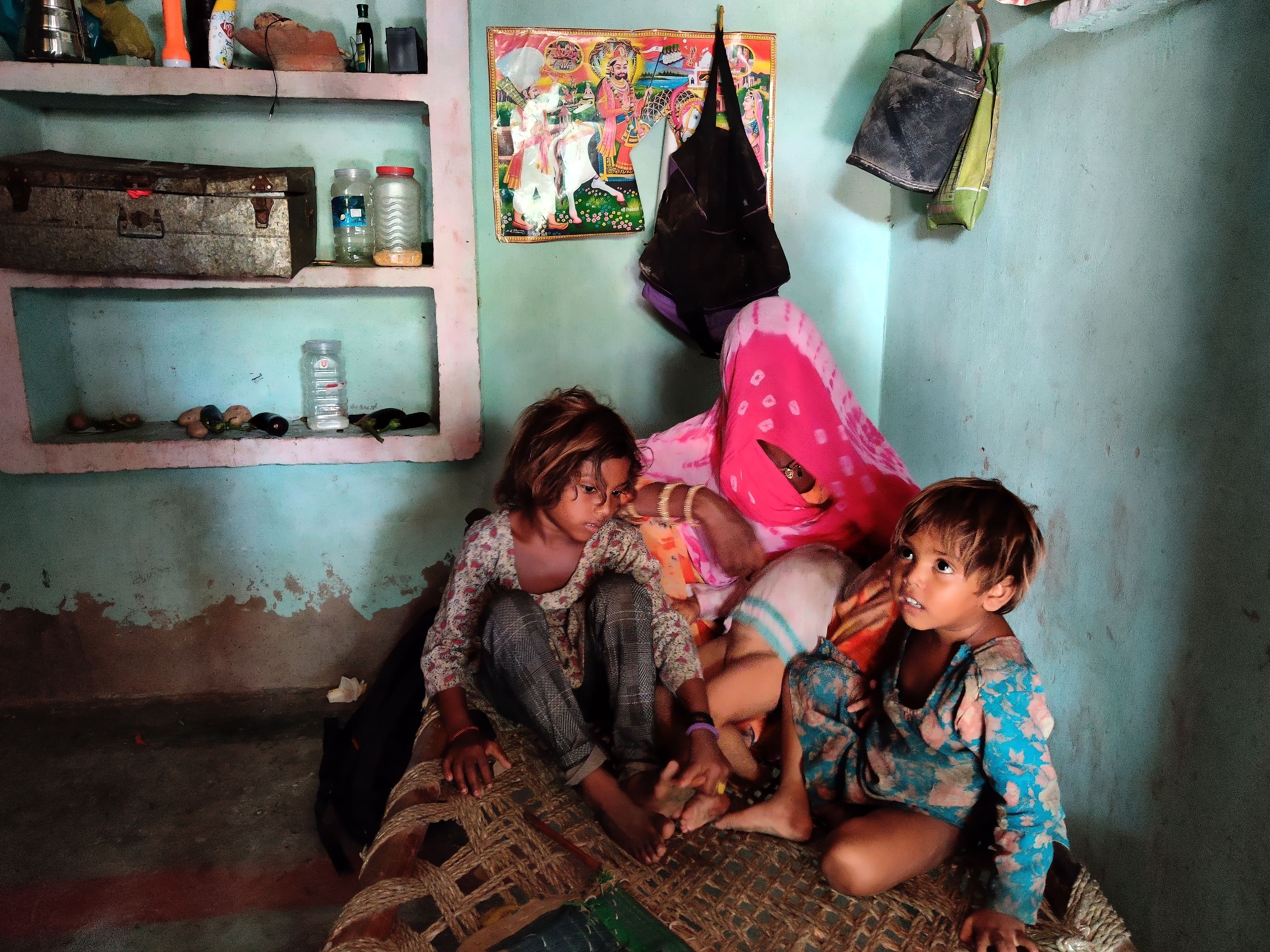
“It was really difficult in the beginning. My husband would drink and fight with me often. His brother committed suicide and his wife also left the house, leaving me alone with him and his father, both of whom are abusive. I’d stand cutting grass in the field till midnight and often get injured because I’d be sleepy and less alert. Then I’d come home to take care of the children and prepare food for the morning. I think it was at least 2 am before I’d be able to sleep most days,” she says.
To make matters worse, the middleman for Sushila’s marriage is her neighbour in Mewat, so she has to see him every day. “My parents are poor, but they never sold me. They tell me the middleman pocketed Rs 10,000, but I only found out later,” she says.
Zubair’s wife Afsana is also a ‘paro’ from Jharkhand. She denies her husband ever received a commission from Sushila’s family, and says she had advised Sushila “to run away many times before she had children, but she never went”.
Social activist Sunil Jaglan, who was honoured by the President for his ‘Selfie With Daughter’ campaign, says there are at least 10 to 12 such daughters-in-law in almost every village in the state.
“This figure is over 200 in bigger villages. I have met at least 150 to 200 daughters-in-law. Such marriages are happening more among Jats, Brahmins, Yadavs and Muslims, and it is difficult to stop them since they remain unregistered and unaccounted for statistically,” he says.
“In such a situation, it is necessary to make marriage registration compulsory to ensure these bahus have a dignified life. We had also raised this issue in the Lok Sabha elections this time. The Congress also included in its manifesto, ” adds Jaglan.
Less than 50 km from the urbanised sheen of Gurugram, development appears to be taking a long time to reach Mewat.
Also read: Why we can’t blame just BJP MLA Saini for lusting after fair Kashmiri women
Bahu dilao, vote pao
Other parts of Haryana aren’t that much better.
“At least my daughter-in-law speaks directly to me now, saying ‘aap pani lenge‘ (would you like to have some water?) and such things,” says Satbir Pehlwan, the sarpanch of Barsola village in Jind tehsil.
Flanked by his son and other village leaders, he adds, “Before this, she would tell her husband or some other member of the family to ask me. This is a step, removal of the ghoongat (veil) is still a long way away.”
Only 15 minutes from Pehlwan’s house, 17-year-old Somi Das sits on a bed with her 33-year-old husband Sandeep Kumar. He lost 30 per cent functionality of his legs after he was diagnosed with polio at a young age. He says he got acquainted with Das at a relative’s marriage in her village in Bihar.
She, however, doesn’t speak, and looks at Kumar repeatedly for permission when asked a question.
“It’s as if she’s god-gifted,” he says. “She adjusted the very next day after coming here. Yes, I had to buy clothes and jewellery for the wedding, her family is very poor,” he tells ThePrint.
A middleman from Jind’s Ahirka village has found a way to monetise this form of kinship.
“My daughter-in-law was brought from outside,” he tells ThePrint, on the condition of anonymity. “Now, when I accompany her on a visit to her maternal home, I talk to families there. When I return, I inform the families of the bachelor boys here.
“Sometimes a little commission is received if the marriage goes through,” he says, adding, “Often it isn’t explicit, but takes place in the form of jewellery or household items.”
The urge to control and entitlement over women is so normalised in the state that before the Lok Sabha 2014 elections, a large number of unmarried men even unionised their vote-bank with the demand “Bahu dilao, vote pao.” These are called the randa or kunwara unions, initially set up in 2009 in Jind.
The sense of entitlement has also, of course, permeated local popular culture. A 2015 Haryanvi song shows single men struggling to perform household chores like cooking and washing clothes, and the song goes: “30-35 ka jugaad karo, bahu le aao mol ki, baith rail mein chal pado, koi Assam aur koi Bihar/Ek baar ki baat se yahaan wahaan na jaane pade baar baar, kam kharche mein kaam chale aur lodh na DJ na dhol ki”
(Fix your marriage at 30-35, get a bahu for a price, take a train to Assam or Bihar/ Do it once and you won’t have to go looking here and there, get it done at a low price and you don’t even have to worry about DJ and dhol)
Women’s welfare is men’s business
Roughly 18 km away from Das’ house, a khap panchayat of around 50 men have gathered in Kandela village to welcome Hisar Lok Sabha MP Brijendra Singh.
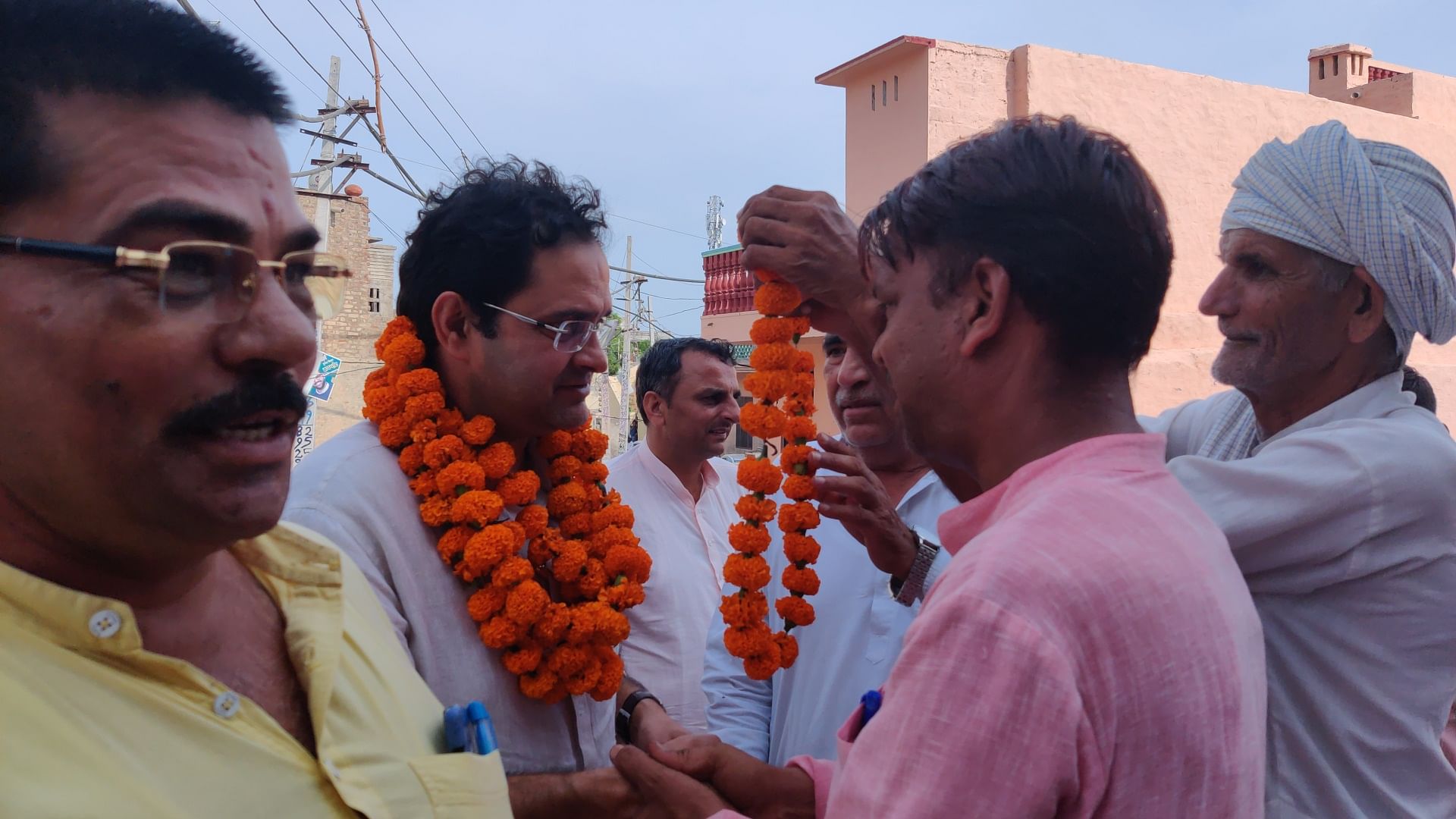
“Ladkiyan kam hain ji, ab yeh bechare kya karenge” (There are few girls in this region, what should these poor men do), Hoshiyar Singh, panch of the Kandela khap panchayat, laments.
“There are at least 20 bahus from different regions in my village alone, and at least 500 men in the larger locality who are older than 30. There’s no problem for the women. They’re treated with respect and everyone stays in harmony,” says Tekram, the village pradhan.
The women on whose behalf he speaks are not present.
Despite Article 243D of the Constitution stating that a third of all seats in Panchayati Raj institutions have to be reserved for women, none can be found at a meeting discussing their status and future. The BJP government’s new set of requirements, added in 2015, stated that women contesting the panchayat polls need to be Class 8 pass.
This further limits the prospect of their participation — 89.1 per cent of all women were instantly disqualified, according to the Census 2011 data analysed by How India Lives.
As MP Singh speaks, championing the “assimilation of India” in the wake of Home Minister Amit Shah’s recent announcement on Article 370, there are only four women in the make-shift auditorium. They sit outside the circle of male panchayat members — veiled, not speaking.
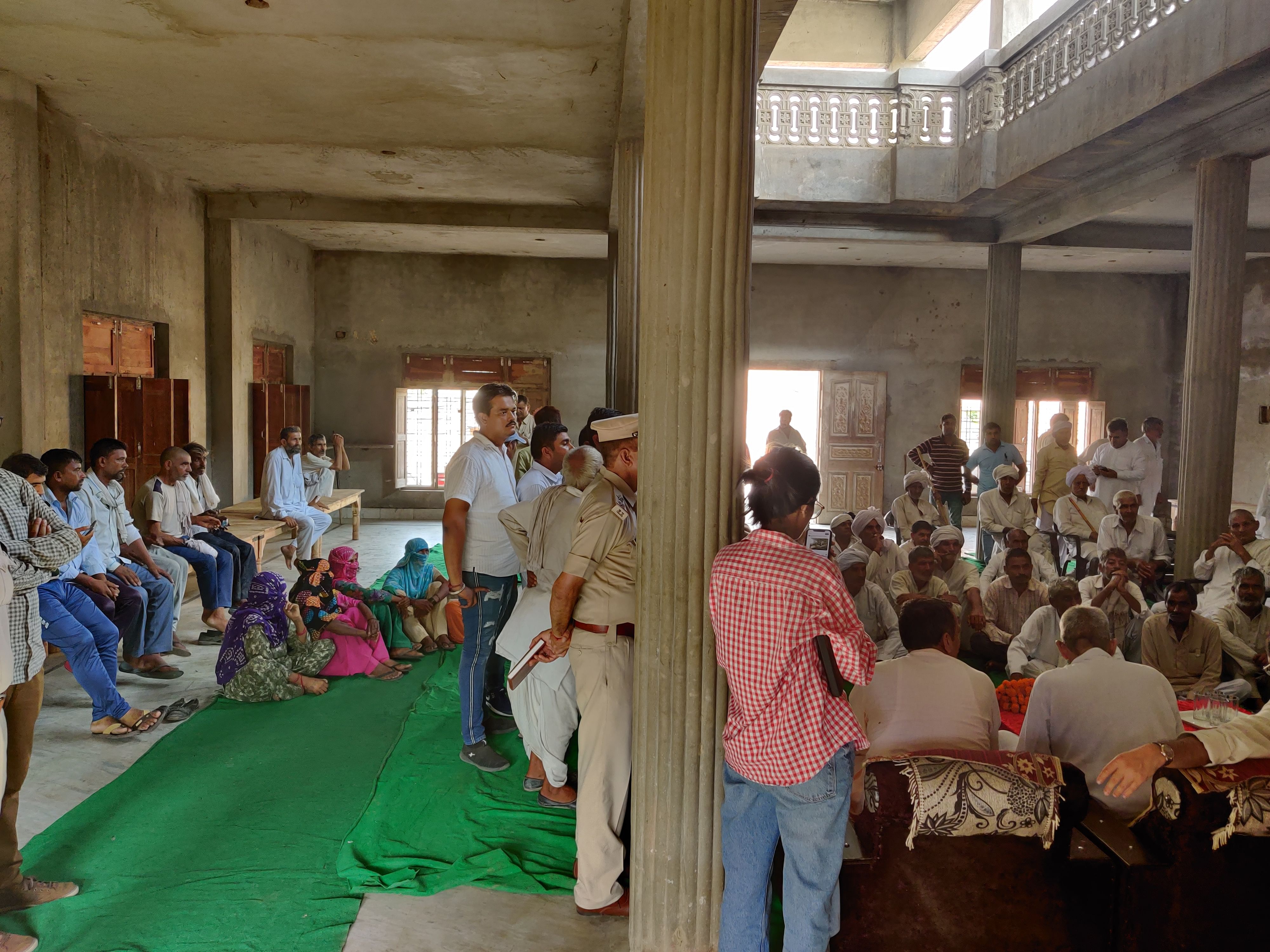
Despite this, the MP is quick to defend his government on Haryana’s progress. “Just because the sex ratio has improved, it can’t be that the issue of bride buying will go away overnight,” he tells ThePrint.
“The mol ki bahu issue is a culmination of decades worth of imbalance. In fact, this government, through its Beti Bachao, Beti Padhao campaign and through strengthening of the Pre-Conception and Pre-Natal Diagnostic Techniques (PCPNDT) Act has really changed the atmosphere of the state.”
जब हमने 'बेटी बचाओ बेटी पढ़ाओ' अभियान चलाया तब प्रदेश में लिंगानुपात की संख्या 1000 लड़कों पर मात्र 871 लड़कियां थी लेकिन हमने समाज, संस्थाओं, सरकारी अधिकारियों के साथ मिलकर काम करते हुए आज 933 के आंकड़े तक पहुंच गए हैं। यह प्रदेश के लिए गर्व की बात है।
— Manohar Lal (@mlkhattar) June 12, 2019
The state government claims that the sex ratio in Haryana has increased to 933:1000 in recent years. However, this figure, calculated primarily by collating at birth data is still subject to scrutiny as it doesn’t take into account the infant mortality rates of girl children after they are born.
Trafficking or just arranged marriage?
It’s not always so mercenary, claim many of the couples ThePrint spoke to. The marriage market in Haryana also functions substantially through word of mouth — connections formed when men travelled to and from Haryana for work, or passed through transit towns as truck drivers.
“In a village of 22 brides, you would find probably one or two of them to be trafficked,” Paro Mishra, assistant professor at the Indraprastha Institute of Information Technology tells ThePrint.
The humanities and social sciences academic has published a number of essays based on her field work in Haryana and Punjab.
“In most Indian arranged marriages, the existence of a middleman is common, so Haryana also exists within a larger political economy of marriage and Indian patriarchy,” she says.
“Both media and academics need to be alert to this. It’s not unknown that funding of NGOs depend on sensationalised reporting. I’m not saying life isn’t hard for these women — they don’t have their families here if things go bad — but we must be careful in the terminology we deploy, because that affects our point of intervention.”
ThePrint also found that cross-regional marriages are inadvertently making inter-caste weddings tolerable in the face of necessity. The ‘paro’ brides are often Dalit or of lower caste backgrounds.
“Agar [ladka] Jat hai, toh woh [ladki] Jatni ban jati hai, Harijan hai to Harijan” (If the boy is a Jat, the girl becomes a Jatni; if he’s a Harijan, she also becomes one), says Hoshiyar Singh.
According to National Crime Bureau records, in 2016, 8,132 cases of human trafficking were registered in the country. Out of a total of 15,379 victims, 9,034 were minors, half of whom were bought and sold in the name of marriage.
And yet, despite the open secret of ‘mol bahus’ in Haryana, only 30 such cases of human trafficking were registered in Haryana in 2016. The next year, that figure was at 48.
In 2002, the Union Ministry of Women and Child Development launched the Swadhar scheme to rehabilite women under difficult circumstances.
The scheme provides shelter, food, clothing and care to marginalised women and girls in need: widows deserted by their families, prisoners released from jail and without family support, survivors of natural disasters, victims of terrorist/extremist violence and more.
“The plan is to strengthen the Swadhar scheme. A scheme called ‘Swadhar Greh’ was also launched on 18 October, 2015. However, the number of women seeking help from this is very less,” Hisar’s SP Ashwin Shanvi tells ThePrint.
Sangwan is not hopeful that these schemes will have impact anytime soon. “Given the way things work here, it will take 25 years at least for even a small effect to be felt.”
“Any government official or politician that we place this problem (bride-buying) in front of, says women that were from the poorest of households are getting to eat Basmati chawal in Haryana. We told them that human beings aren’t just empty stomachs, they’re minds, hearts and souls. The dignity of these women is no laughing matter,” Sangwan adds.
Also read:Haryana CM Khattar didn’t say ‘bring girls from Kashmir’, but he sure found it funny


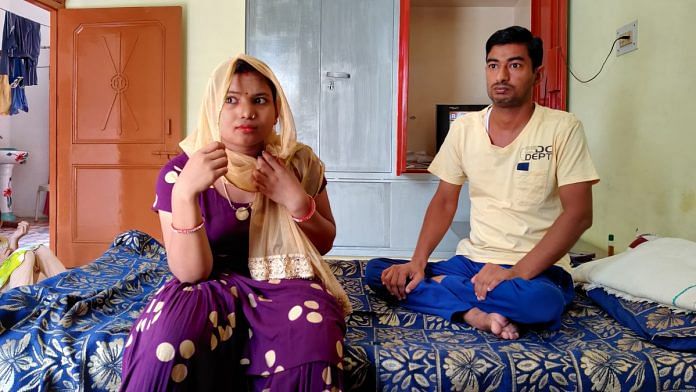

One can write all these articles and tell several heart wrenching stories of such young girls but this won’t stop until something is done to tackle both the sex ratio in Haryana and the extent of poverty in states like Bihar and Jharkhand.